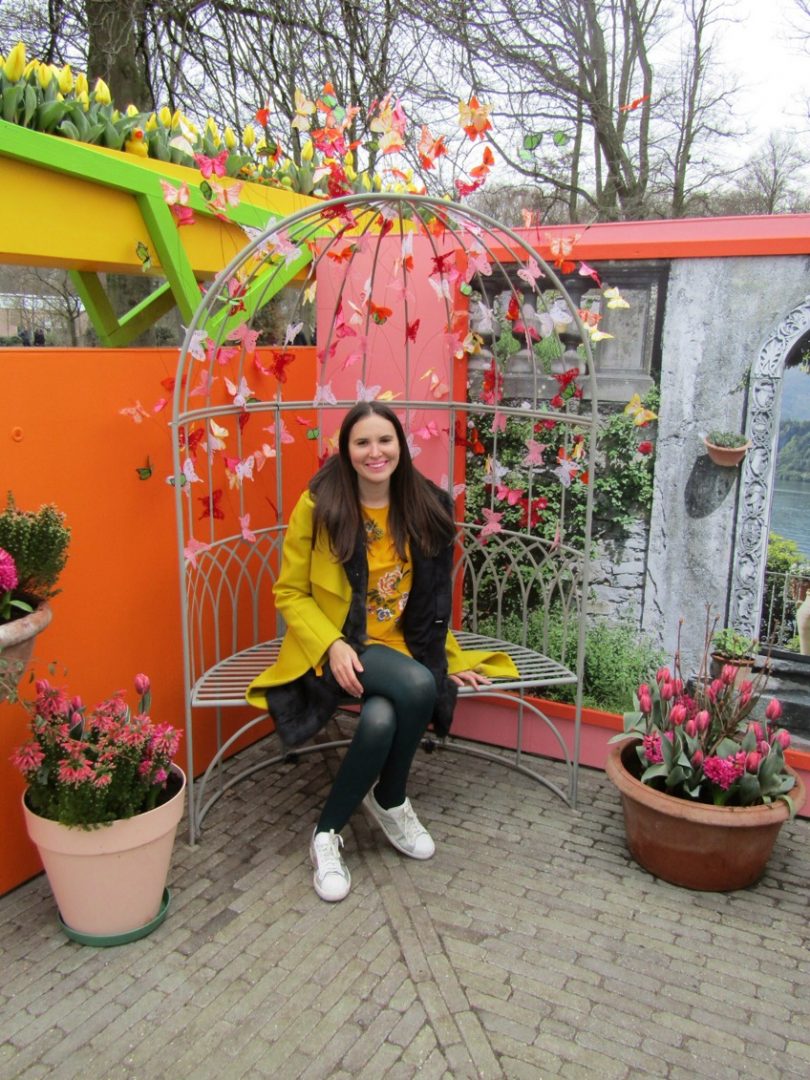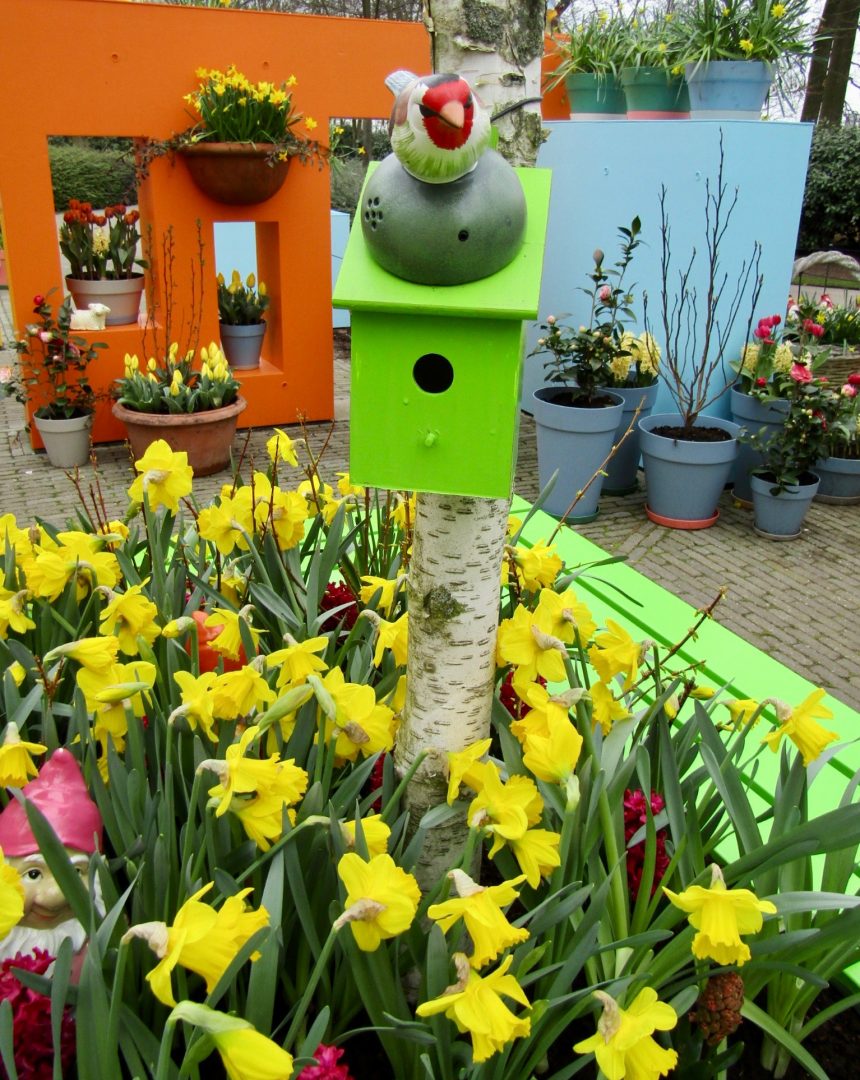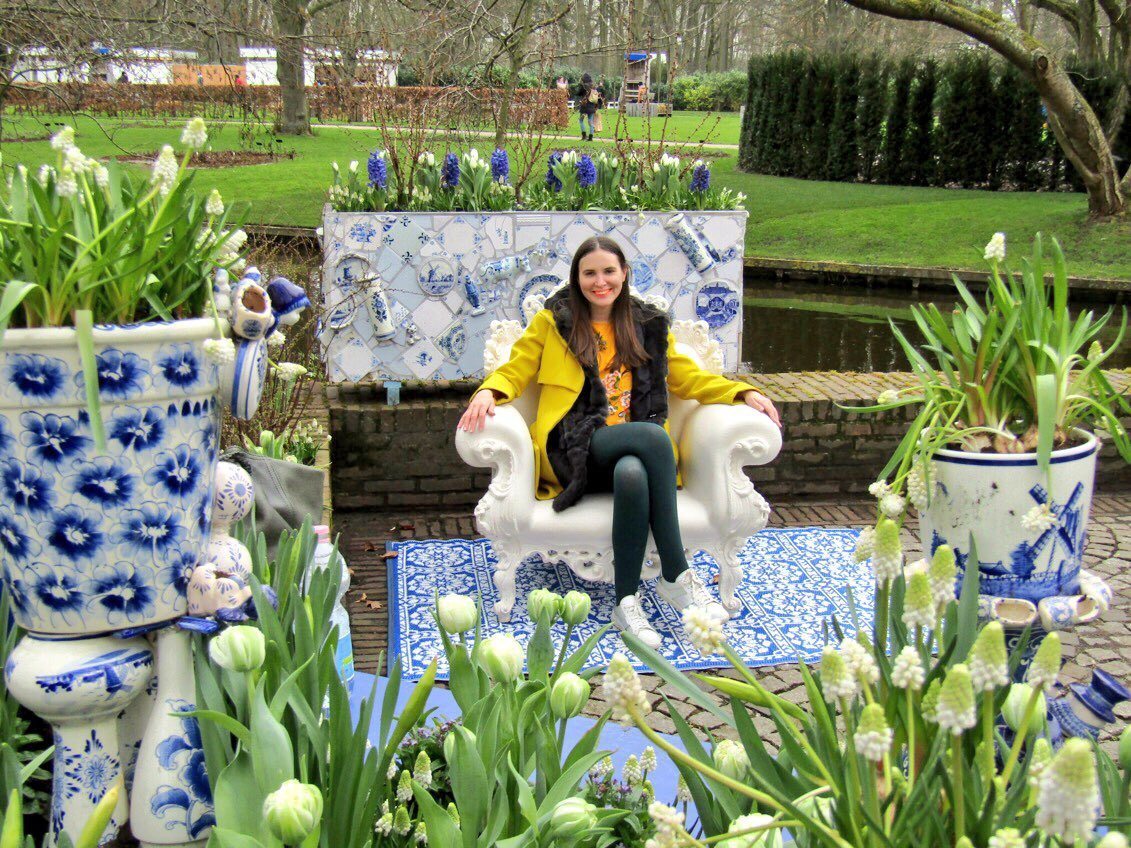The first time I went to Keukenhof was in 1994. Besides being Panamanian, I also have Swiss citizenship from my father’s side. When I was a girl we traveled a lot to Europe to visit his family and since we were flying with KLM we had to stop in Amsterdam. A few days ago my grandmother gave me some letters (yes letters!) That I wrote to them when I was on my trips. One of those says “Dear grandfather, we are going to Amsterdam and going to the canal and to see the flower park. Love you, Ursula.”

In Amsterdam it was the first time I saw tulips and I fell completely in love with these flowers. To this day they are still my favorite flowers. And there is no better place to see them than in the Keukenhof park.

Tulipmania
Although the Netherlands has done a very good job associating tulips with their country; originally they are from Turkey, which used to be the Ottoman Empire. They were considered a sacred flower and served to adorn the costumes of the sultans. The word ‘tulip’ comes from the word for ‘turban’ in French, Turkish and originally in Persian.

In 1559, tulips arrived in the Netherlands, but it was not until 1593 that they began to be known because of the work of the botanist Carolus Clusius. He started to grow exotic bulbs, being very reserved with his work. The curiosity of the people grew causing someone to go into his garden at night to steal some bulbs. And so they began to reproduce the flower throughout the country, whose sandy soil turned out to be ideal for its growth.

It seems that I am not the only one infatuated with tulips. Soon tulipmania began, where the rarest varieties received the names of illustrious people. This custom is still preserved in the hall of fame in Keukenhof, where you can see names like ‘Vincent Van Gogh’ or more recent characters such as ‘Telletuby’.
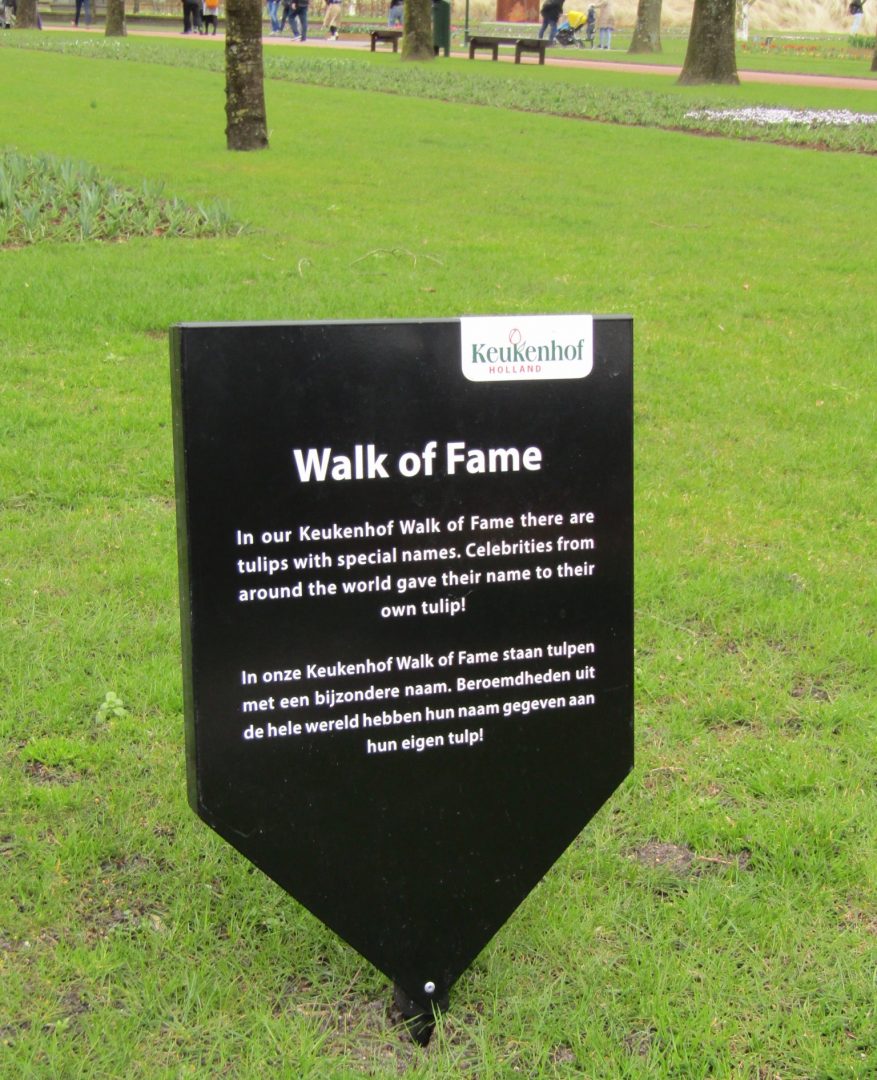
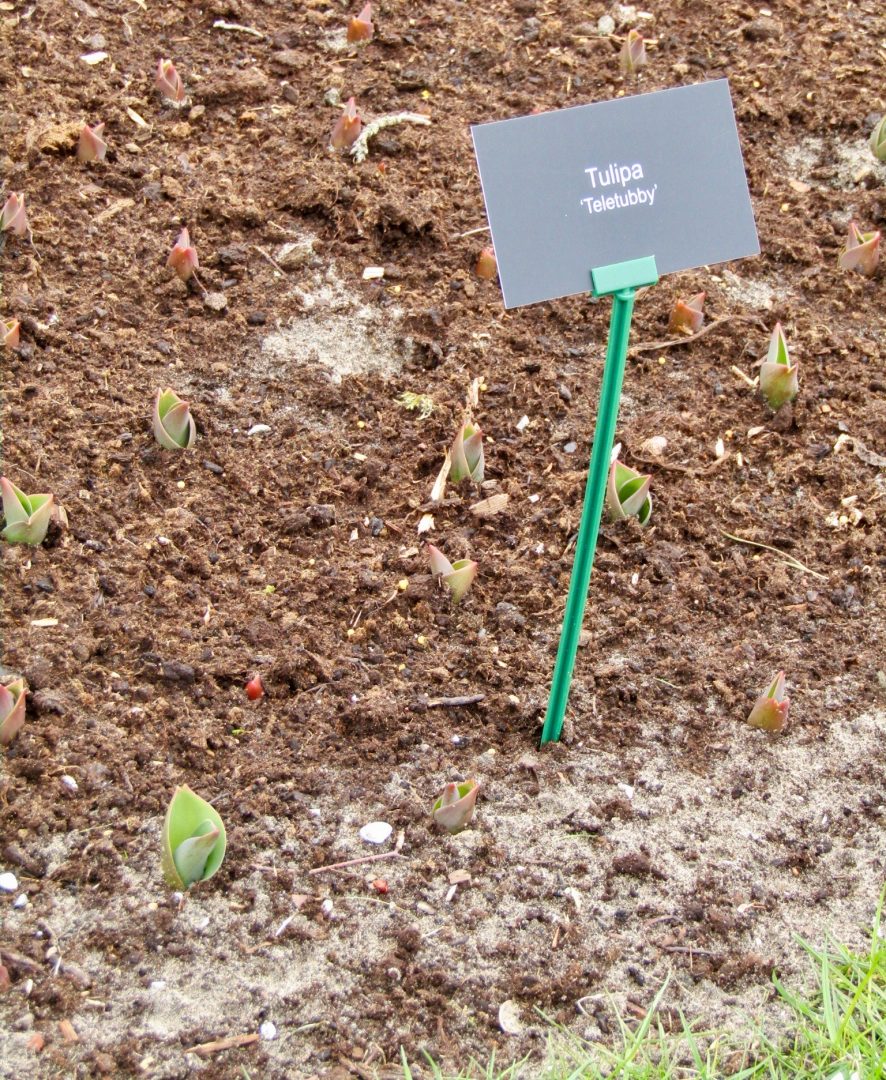
During the 1620s the price of tulips began to rise and in the 1630s speculation grew. The average income was 150 florins per year; while a tulip bulb cost 6,000 florins in Haarlem.

The speculation of tulips
The bubonic plague and the lack of labor raised the prices even more in 1636. A future market was created for bulbs that had not yet been collected. The sale of tulips was in taverns and in the stock market. Finally in 1637 the bubble exploded and the flowers lost their worth overnight.

In Keukenhof there is an exhibition in the Juliana Pavilion that explains the tulipomanía of the 17th century. You can also go through the historic garden that shares information about the 400 years of tulip cultivation in Holland. It has varieties that date from the 17th and 18th century.
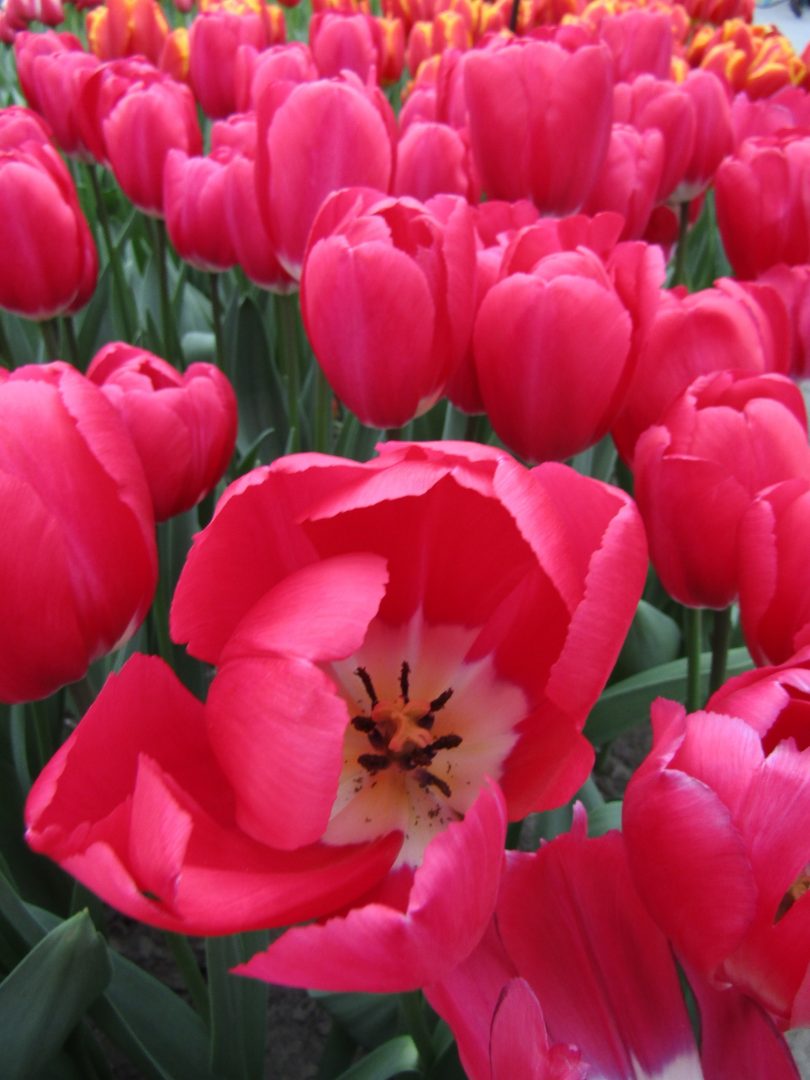
History of Keukenhof
The land where Keukenhof is located was a place to go hunting in the 15th century. It also served to provide herbs, fruits and vegetables to the castle of Jacqueline, the Countess of Hainaut. Her name comes from this activity. After she died, the governor took over the property and in 1641 built a castle called Castle Keukenhof and the property came to have more than 494.21 acres (200 hectares).
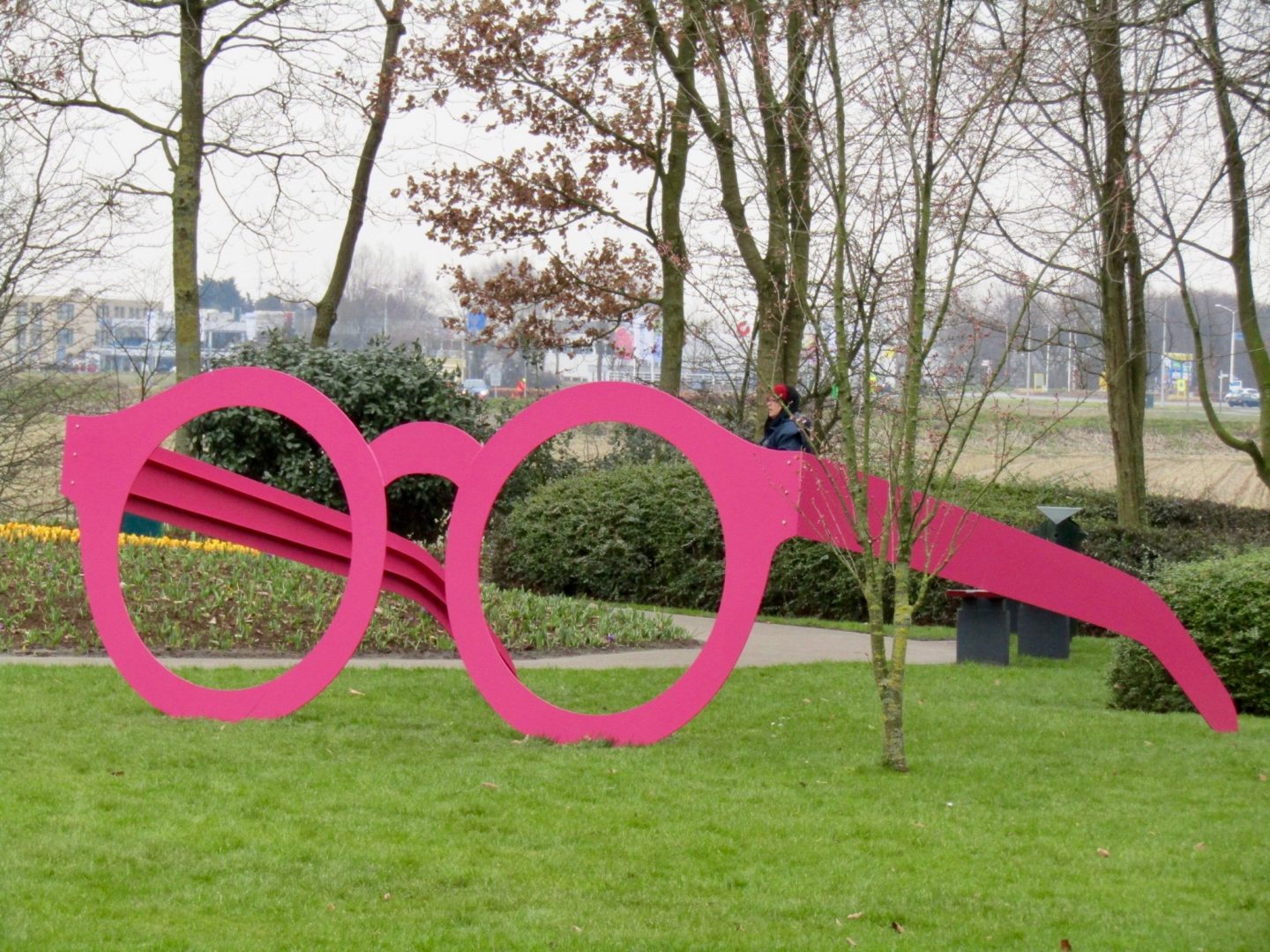
In the 19th century, the new owners hired landscapers who designed Vondelpark, an urban public park of 47 hectares (120 acres) in Amsterdam. Finally in 1949 the mayor of Lisse established a garden so that the Dutch flower growers could show their hybrids to be exported. This spring park was initially managed by 20 of the main producers of flower bulbs in the country. Currently there are 100 suppliers.
Photos of the tulips:



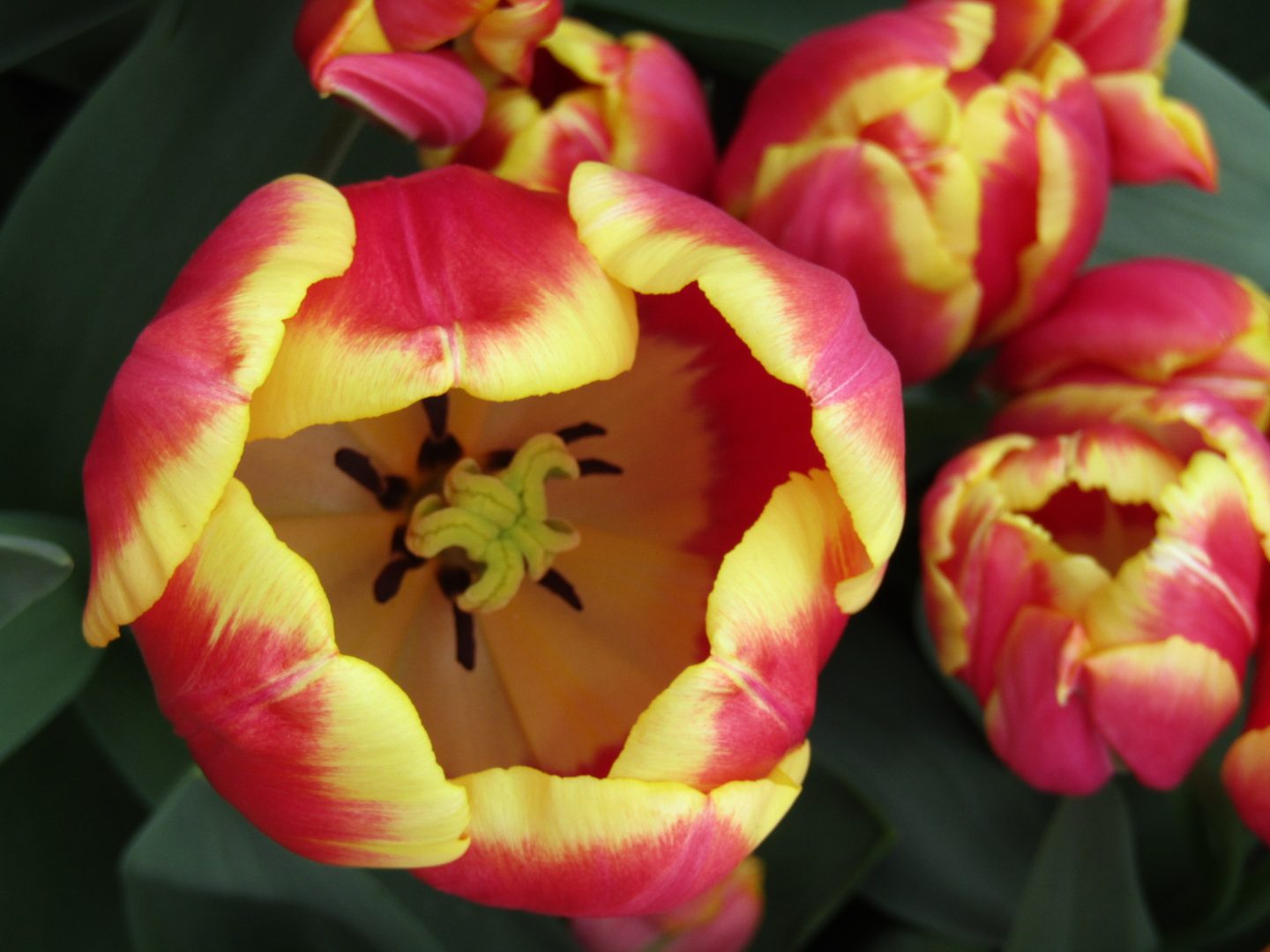
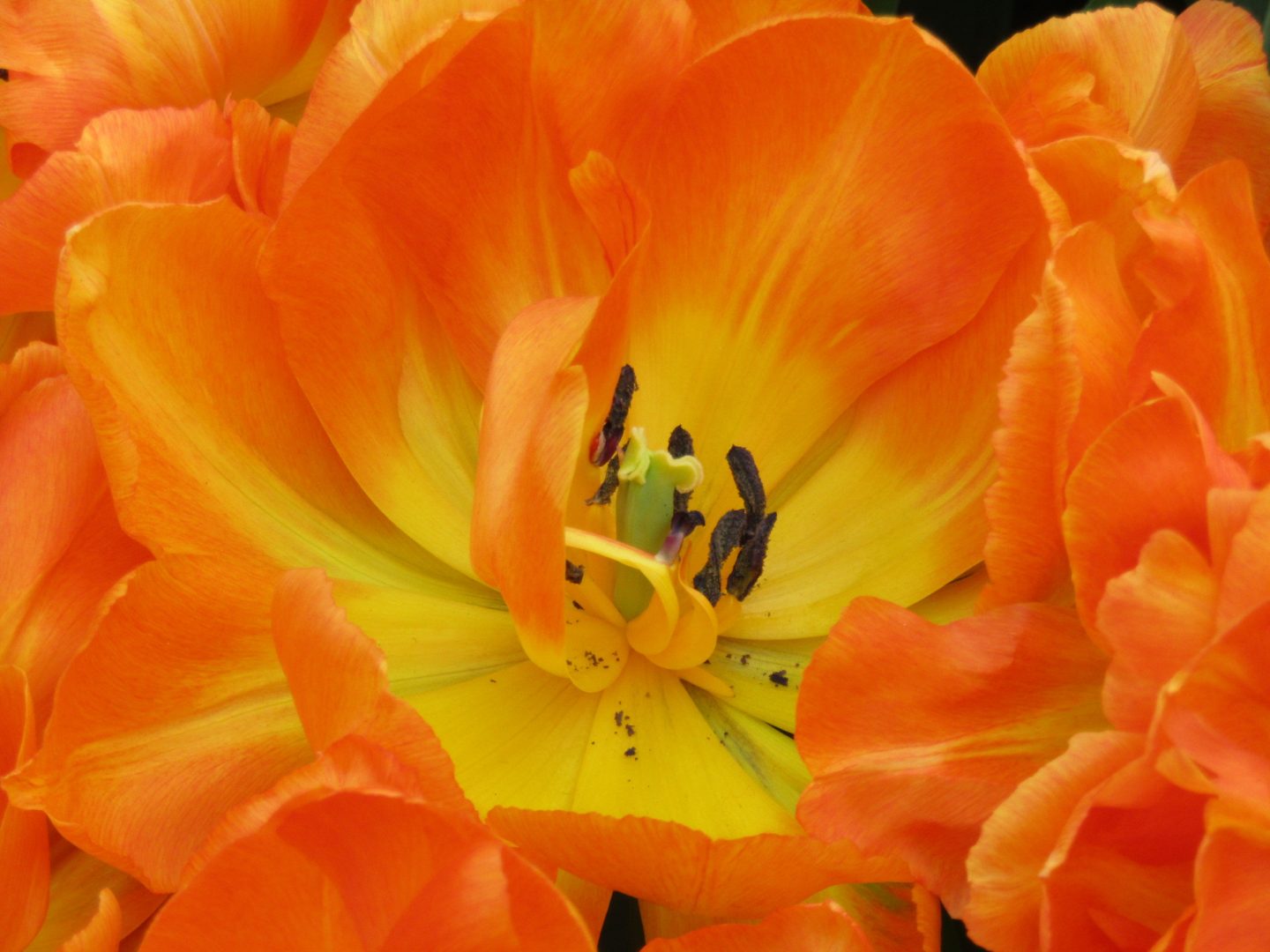

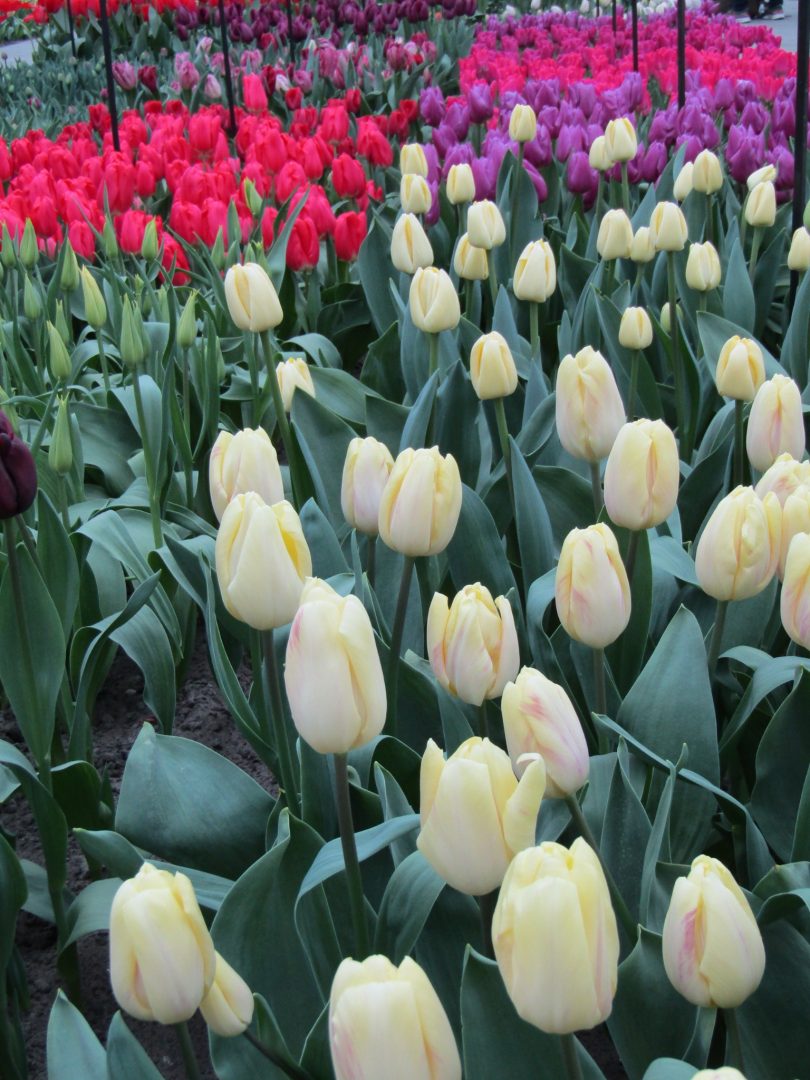
Keukenhof opened its doors to the public in 1950 and was a resounding success. 236,000 visitors went to the park in the first year.
Visit the park in the spring
1.4 million visitors went to Keukenhof in 2017. Of these 20% were Dutch; 40% from neighboring countries such as Germany, the United Kingdom and Belgium; 10% from the United States and 8% from China. Visiting the garden is super easy, since the Dutch public transport system is very efficient.
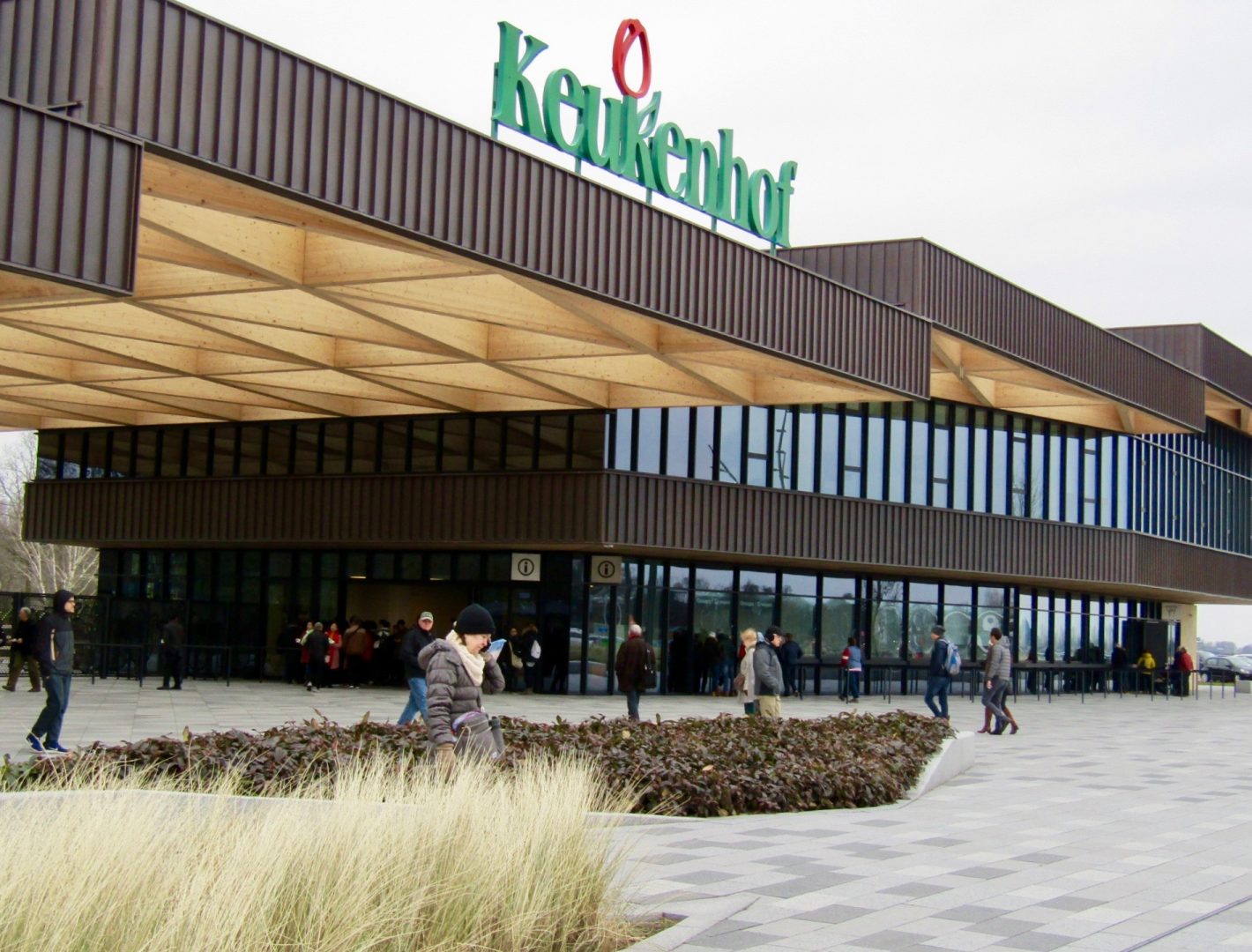
We went on March 23, 2018, the day after the park opened. We were going to Rome with KLM and we had a long stop in Amsterdam. If you have a stop of 6 hours or more it is possible to leave the airport and go to the garden.
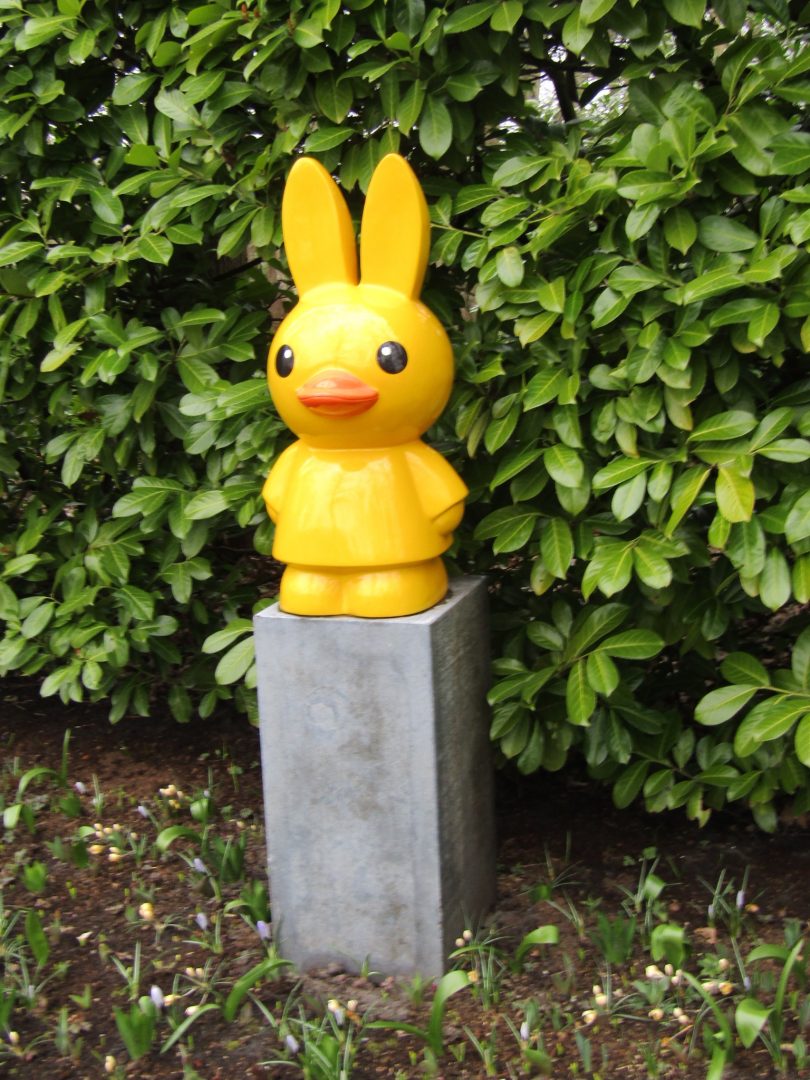
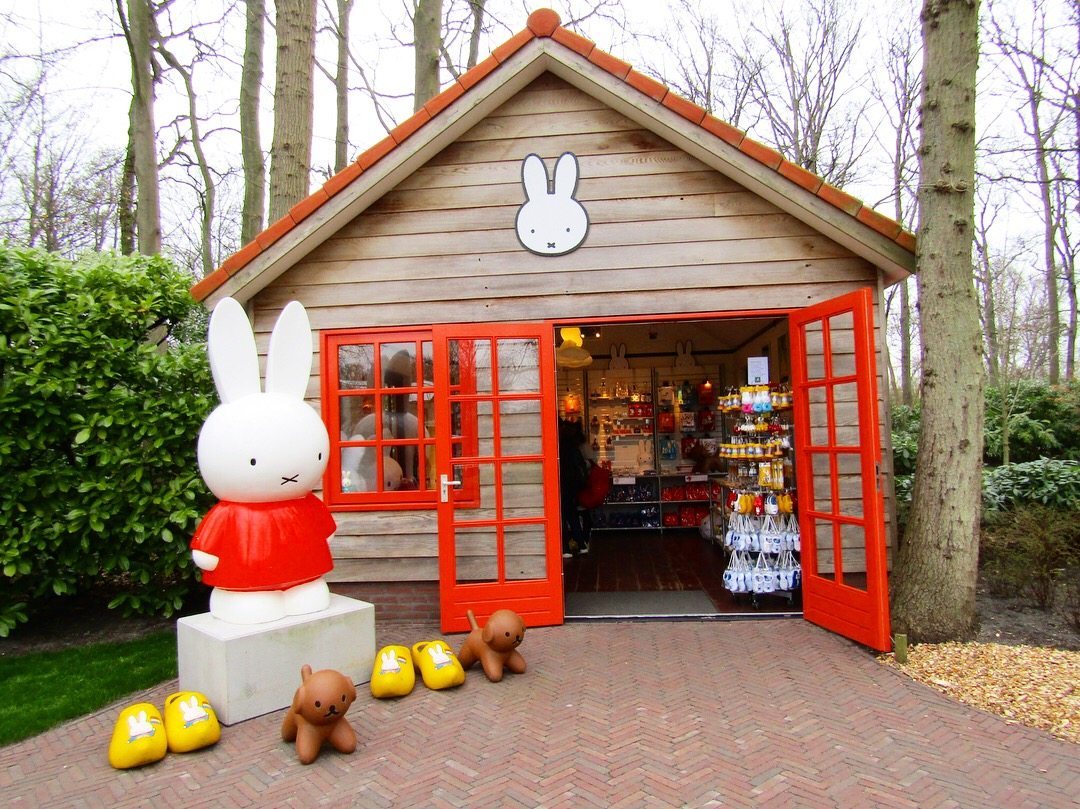
We passed through migration and as soon as we left we saw signs (with tulips) everywhere indicating the departure point of the bus that takes you in 30 minutes direct from Schiphol airport to Keukenhof. You can buy a combo ticket that includes transportation and entrance. If you have hand luggage, you can leave it in the free lockers that the park offers.
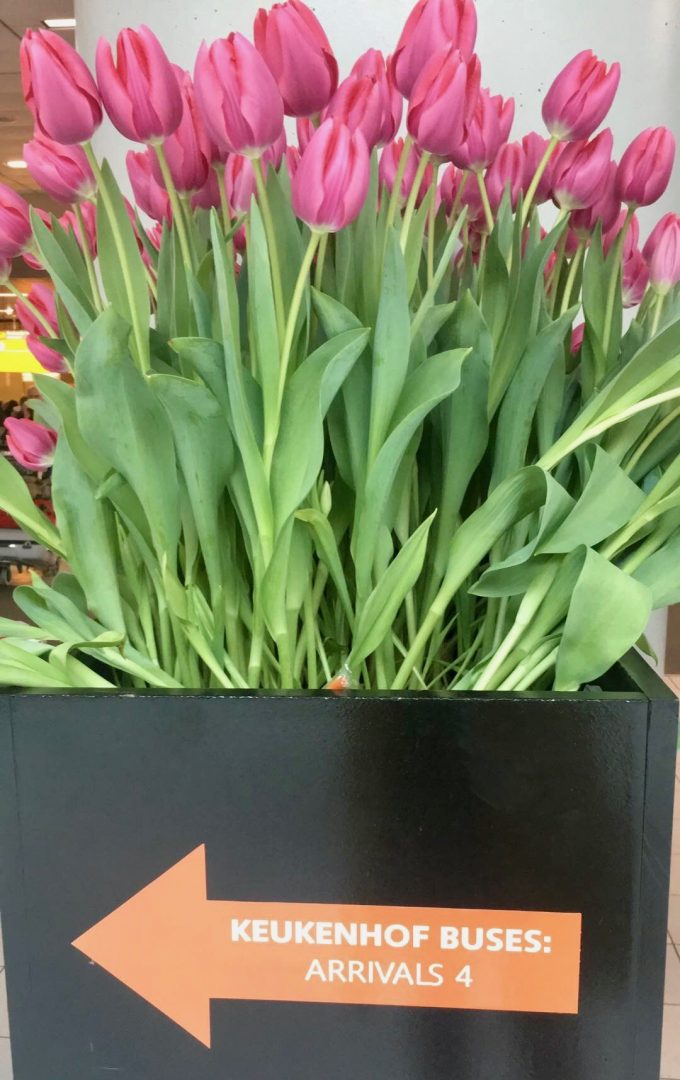
Keukenhof is open from March 22 to May 13, 2018. The daily schedule is 8 a.m. to 7:30 p.m.

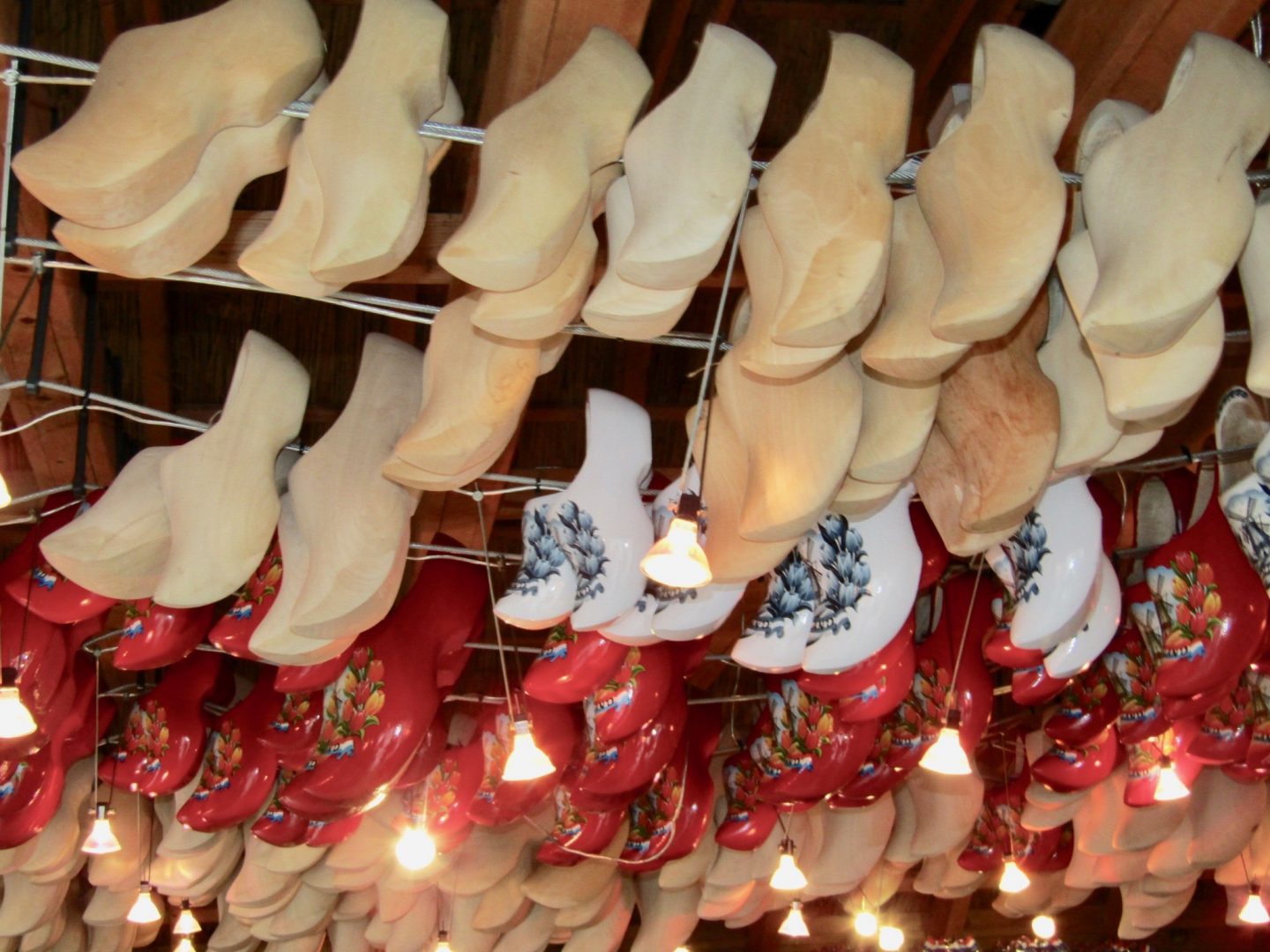

An experience for the whole family
Visiting the park is a good family experience. There is a fairly large playground, next to a food kiosk. In addition, there is a petting animal zoo with sheep, goats, turkeys, chickens and more.

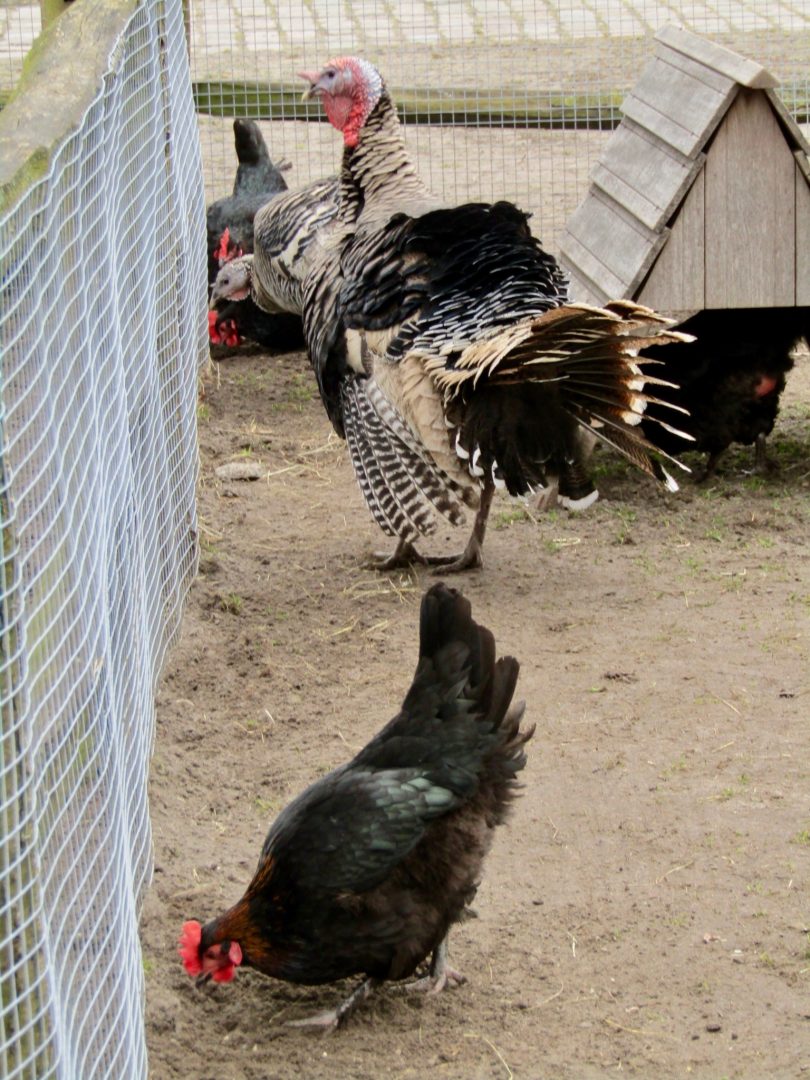
A labyrinth made with plants takes you to an observation tower that allows you to see the fields of tulips. Unfortunately, when we went they were not yet flowering.

There are different pavilions with food options inside and outside. With the cold, nobody was eating outside, but in mid-April it must be full of people. You can drink liquor in the park and there is free WiFi in all the pavilions.

If you want to spend more time, you can stay in a hotel en Amsterdam, Haarlem or Leiden.
More than 7 million flowers
Keukenhof used to be the largest flower garden in the world, until it was replaced by Dubai Miracle Garden. It is known as the Garden of Europe and has more than 7 million flowers planted on 79 acres (32 hectares).

There are three pavilions:
Oranje Nassau: with different flower cuts every week.
Beatrix: orchids and anthuriums.
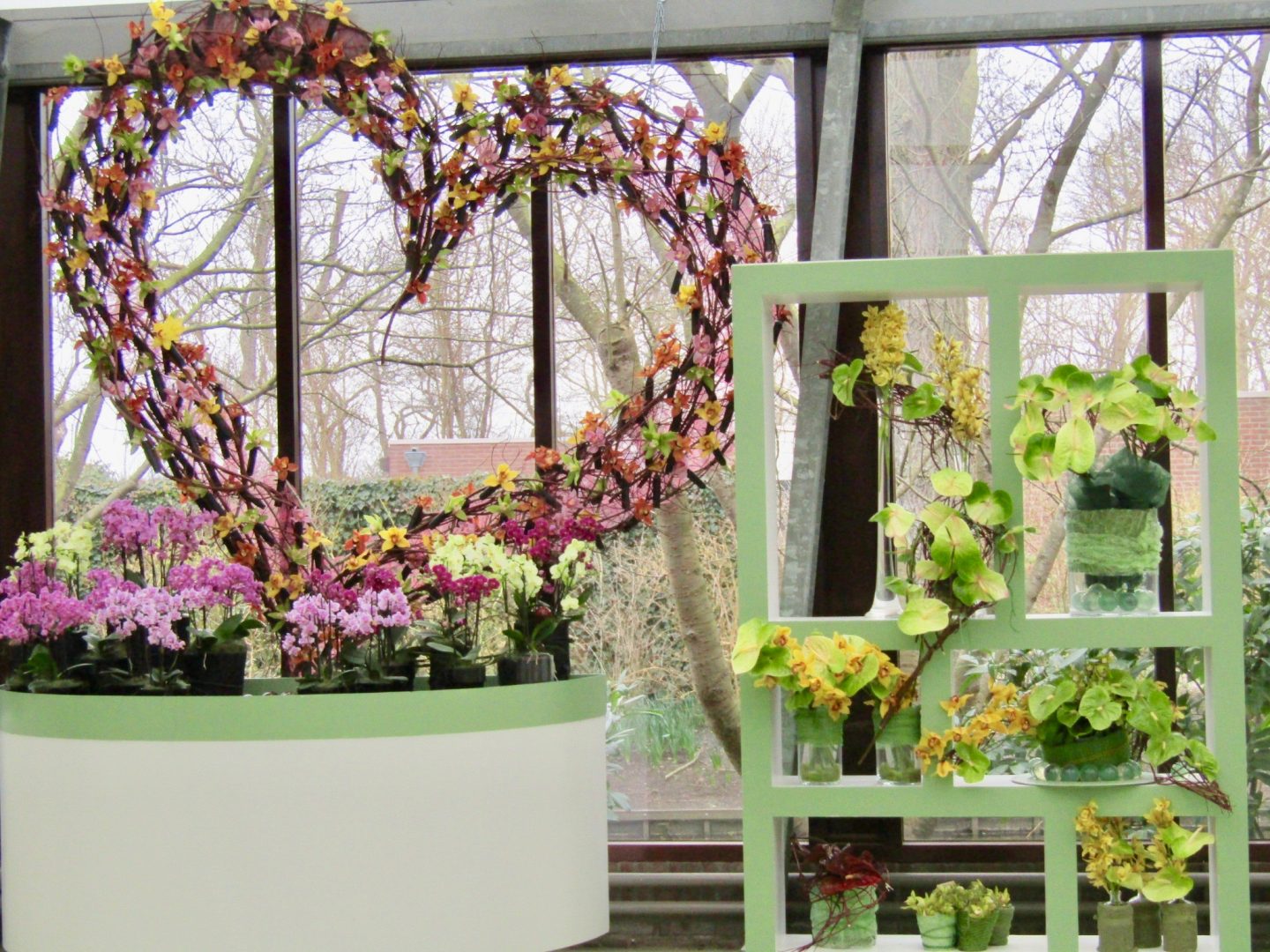

Willem-Alexander: tulips, lilies, different flowers and plants.
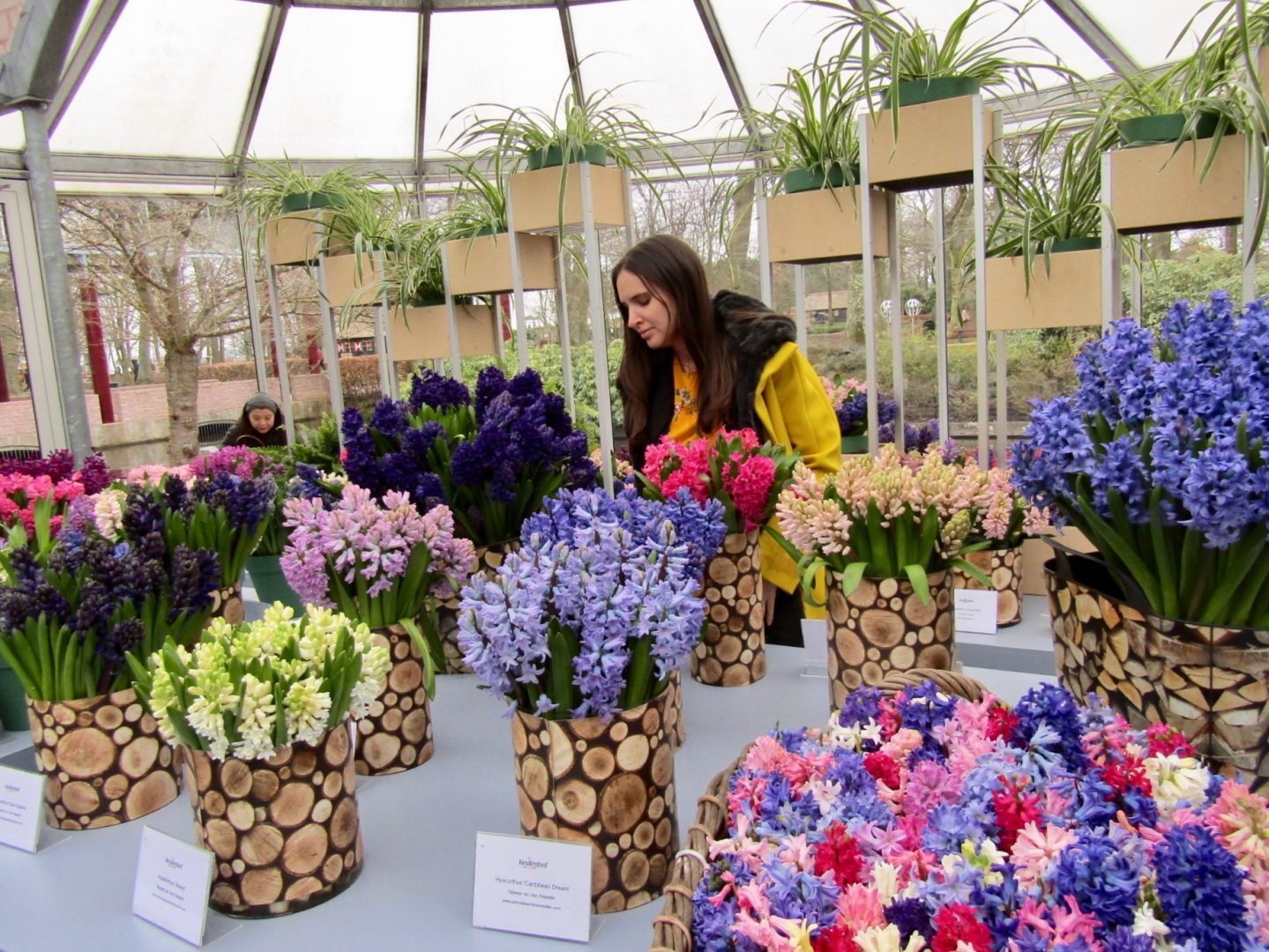
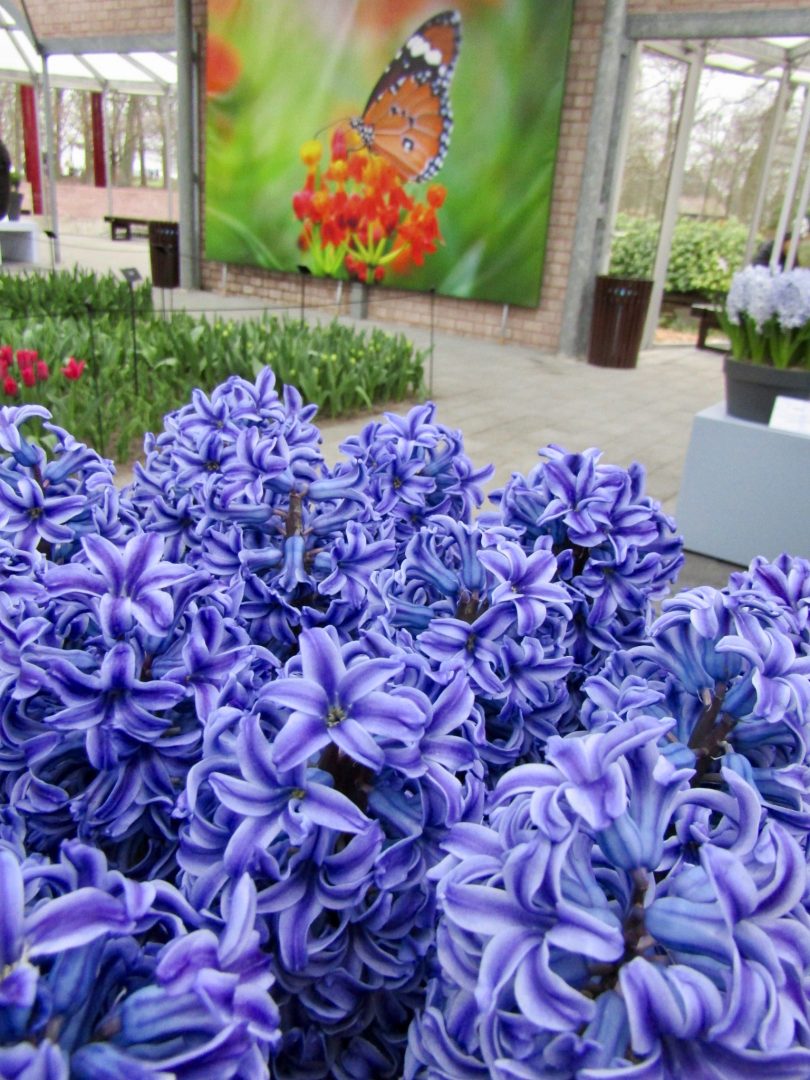


The gardens show a collection of tulips, hyacinths, daffodils, orchids, roses, carnations, lilies, lilies and many other flowers. Tulip lovers can see more than 800 varieties in all colors. Many areas of the park have fountains, rivers and lakes, with swans and ducks.
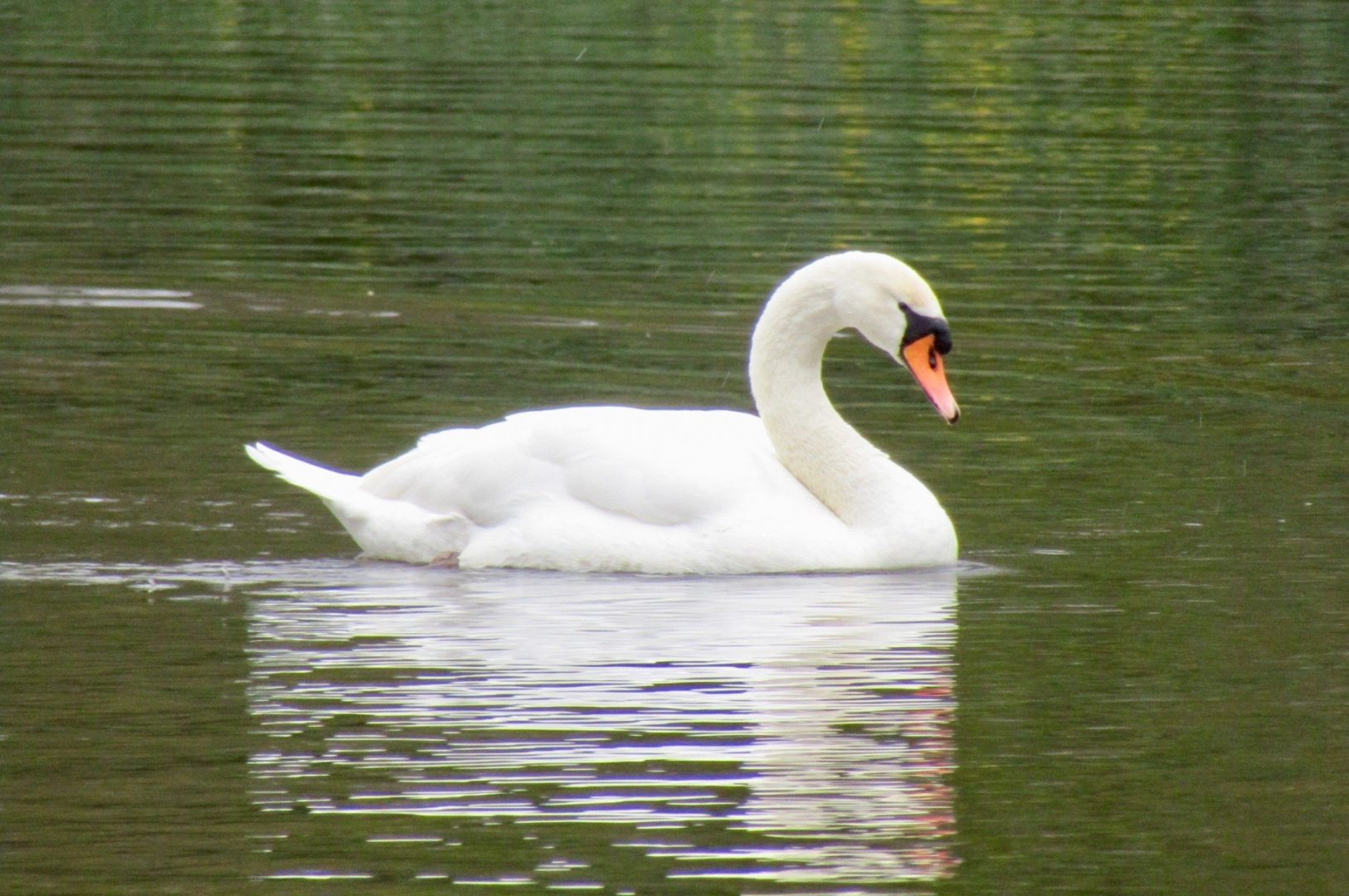
Some of the sculptures you can see in Keukenhof:
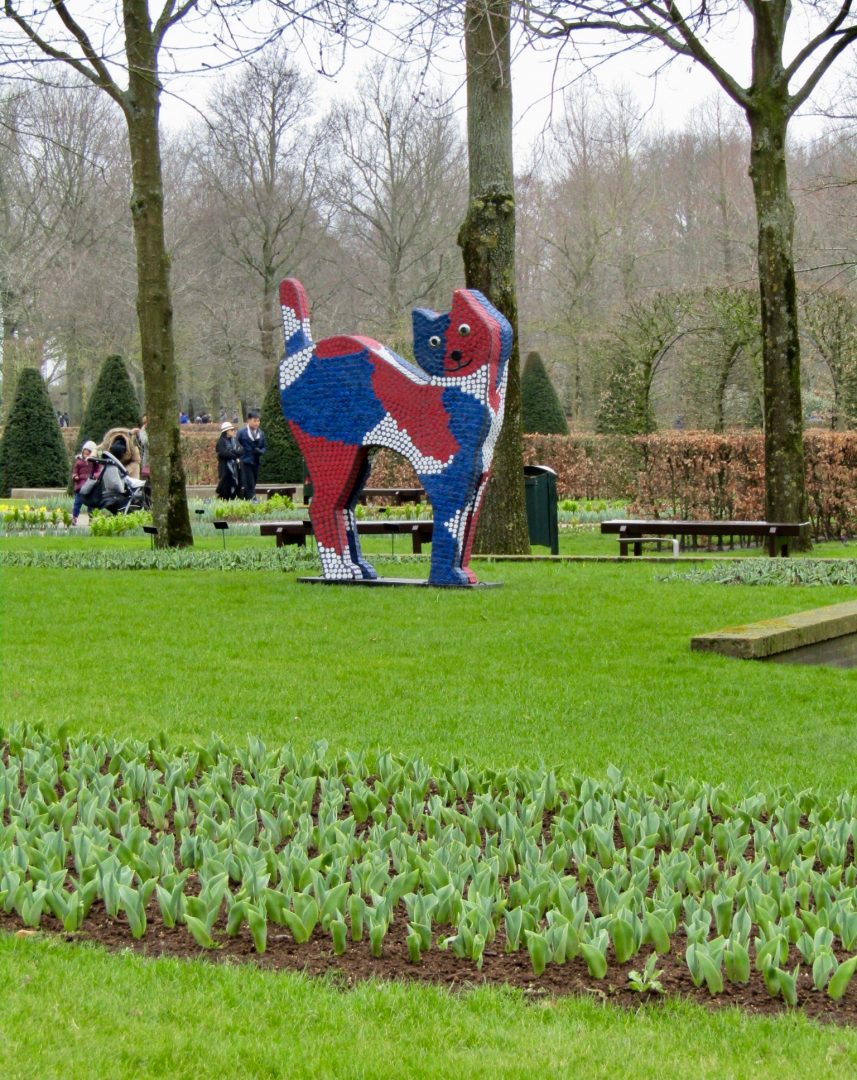
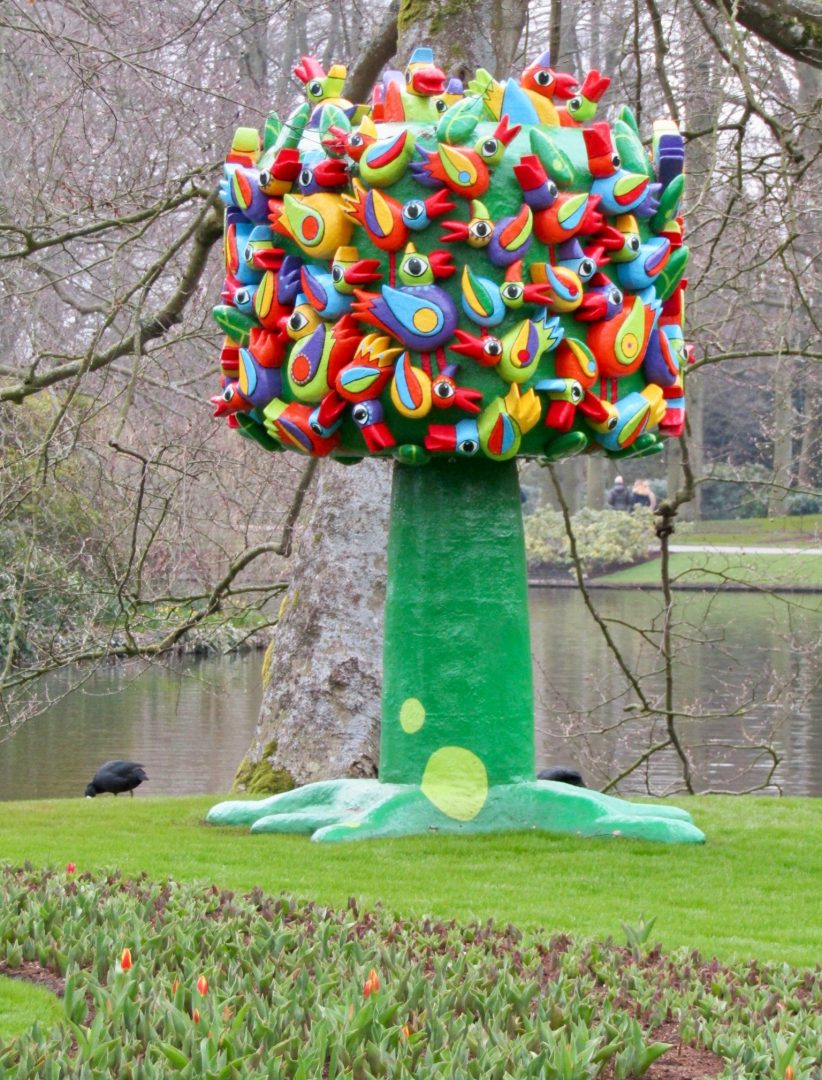
There are more than 9 miles (15 kilometers) of trails within the park. If you want to go faster, you can be like the Dutch and rent a bike at the main entrance. Another option is to take a boat that lasts 45 minutes touring the canals around the park with fields full of tulips.

A unique experience is to fly over the tulip fields. During the season, the Royal DC-3 Dakota ‘Prinses Amalia’ plane departs from Schiphol-Oost for 30-minute tours. Tours are available Saturdays and Sundays. It is necessary to make a reservation in advance.
Romance in the Flowers
The garden began in 1857 during the romantic period and the park has served as a stage for thousands of marriage proposals and meetings of lovers. Each year, a different theme is chosen to make special exhibitions. In 2018 the theme is ‘Romance in the Flowers’ to celebrate its 69th version.
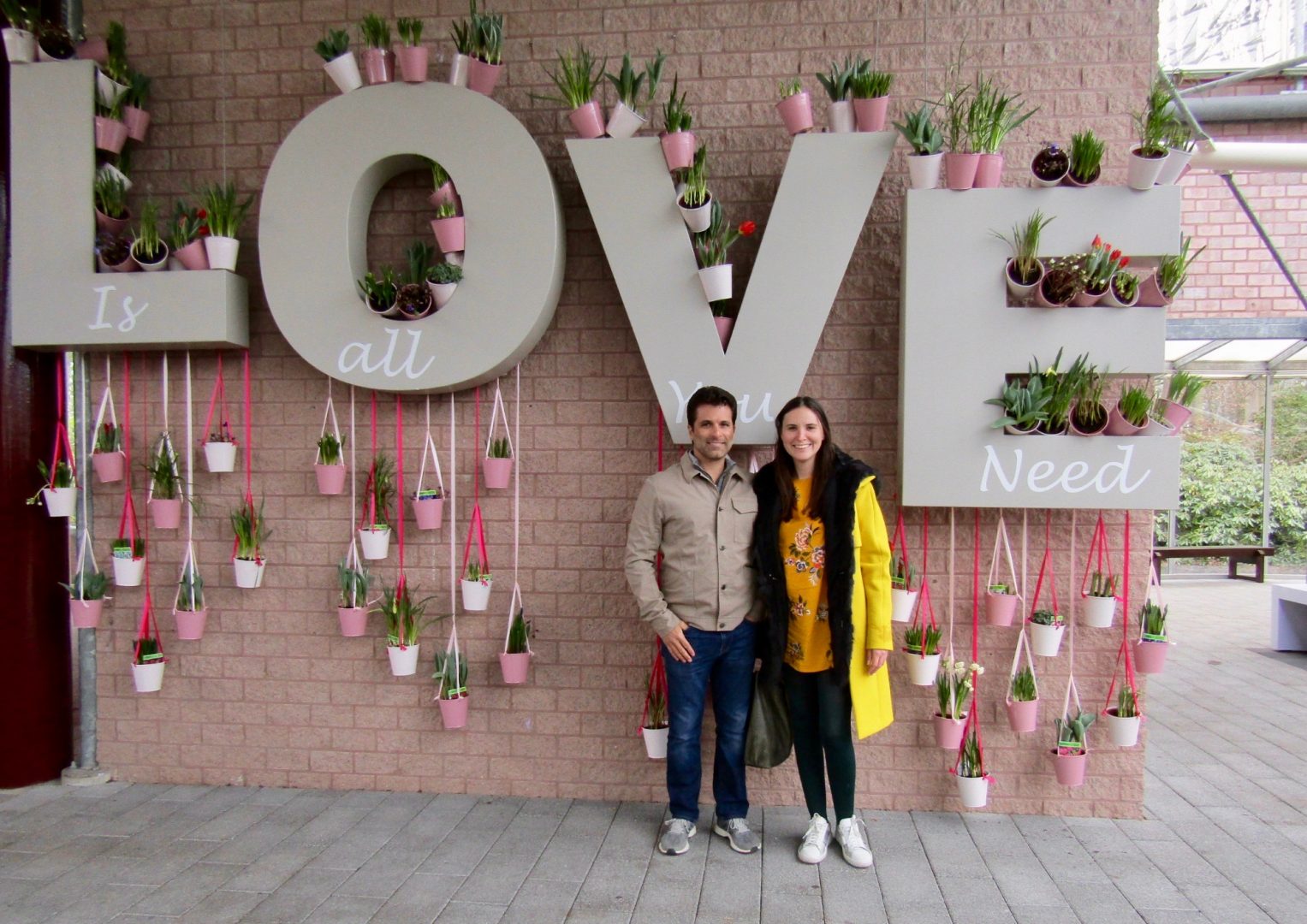
There will be many red roses, but they were not blooming when we went. I liked two exhibitions which were the best to take pictures.
The Delft Blue exhibition (white ceramic with blue typical of Holland) has a chair that makes you believe you are the queen of flowers. The porcelain is mixed with the flowers, you can also see the traditional wooden shoes painted in blue. A mill in the back allows you to take photos on a boat.
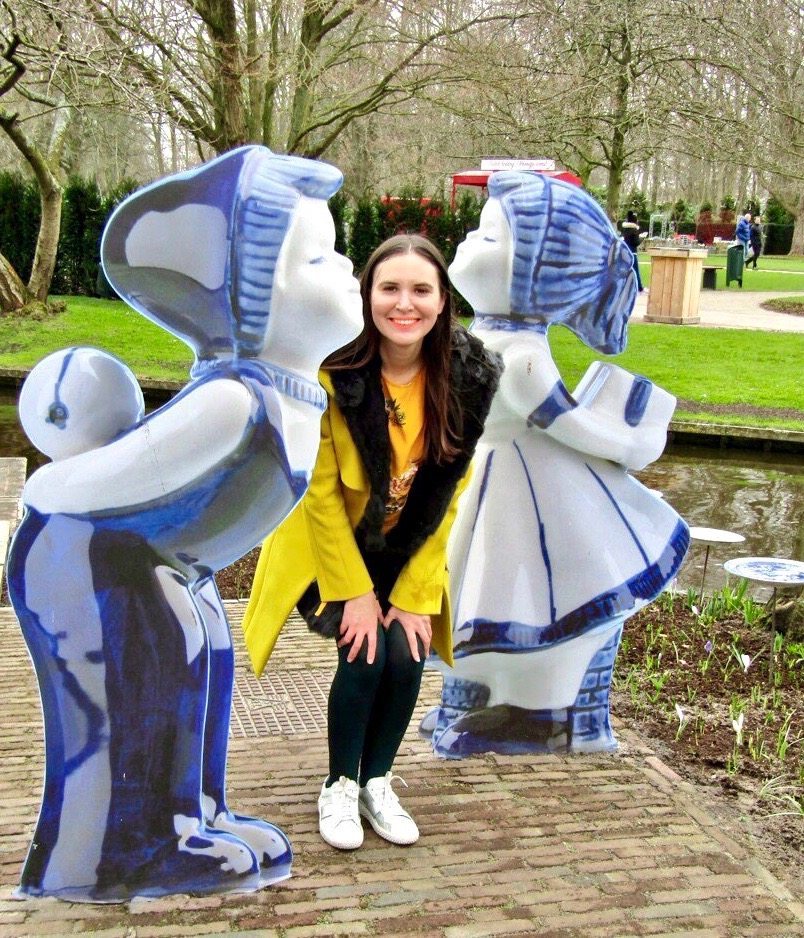
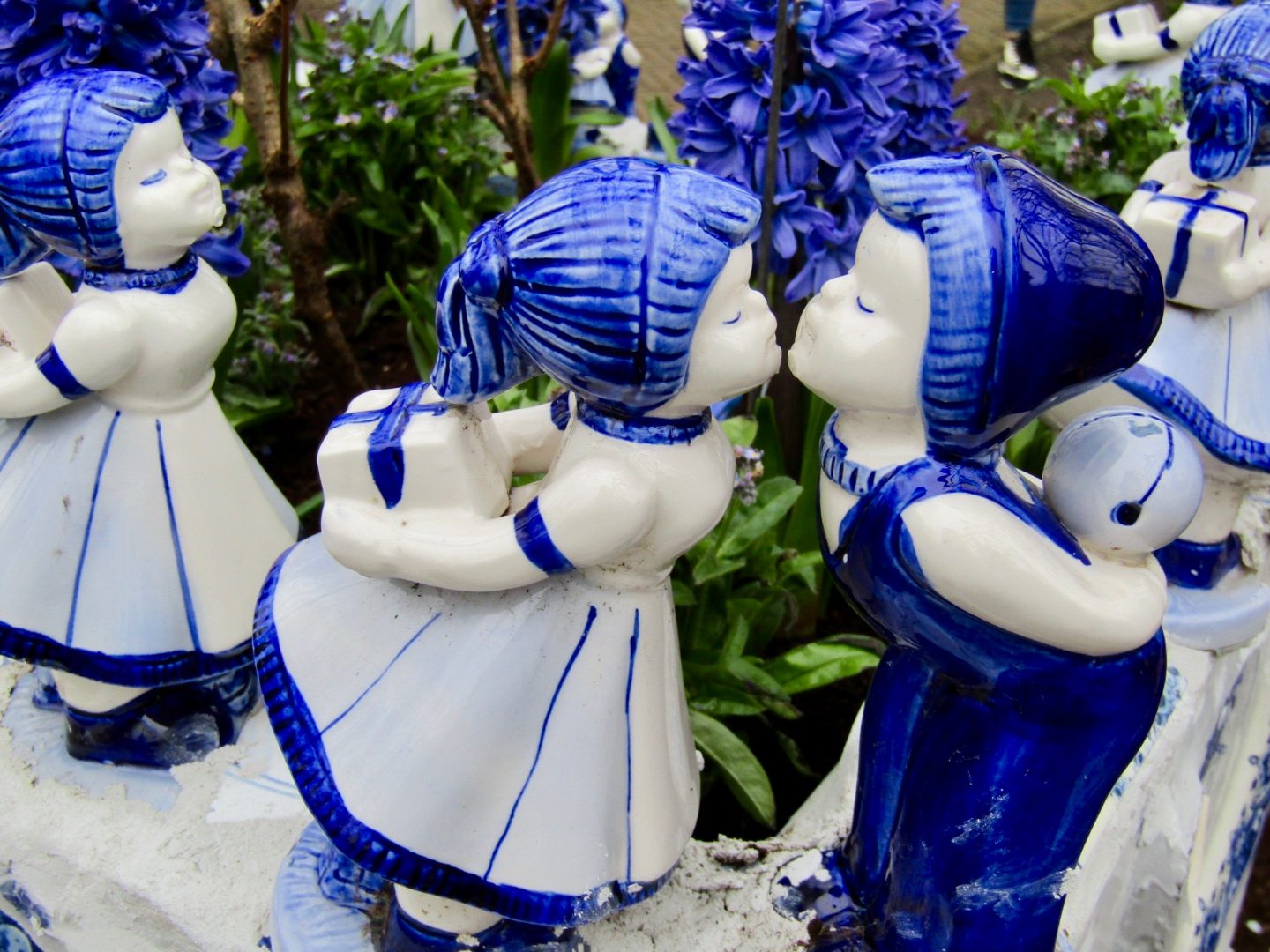
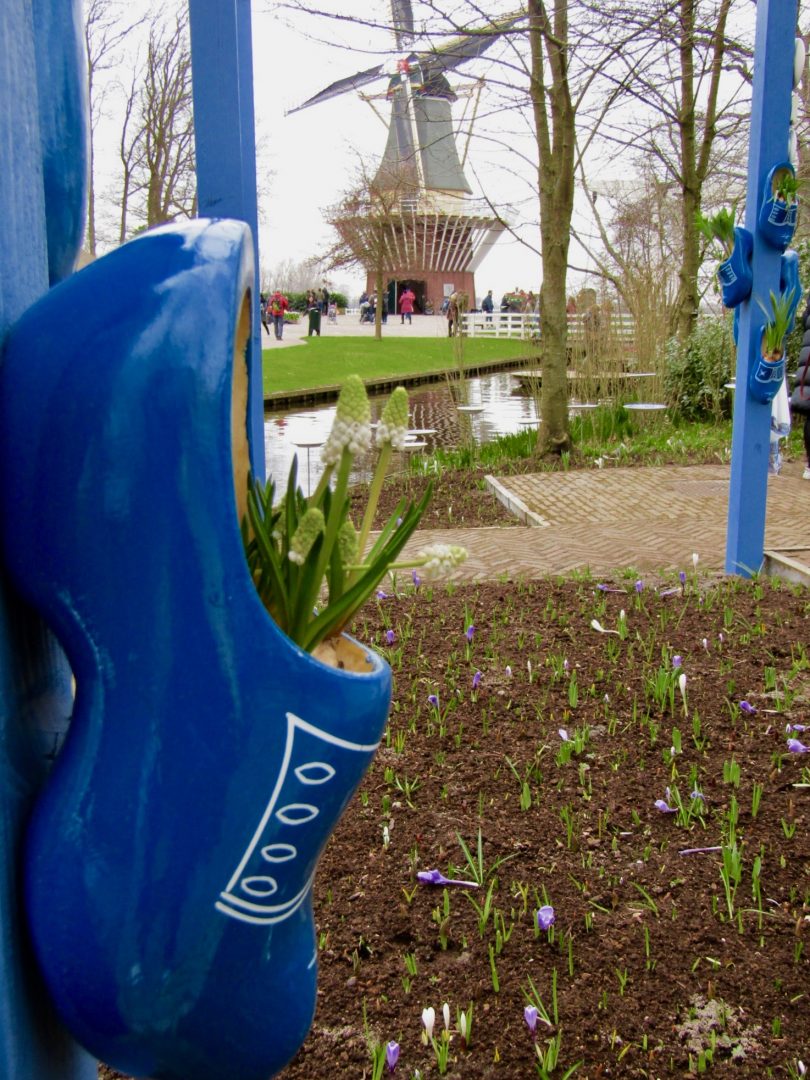
The other exhibit that I loved was the Garden of the Rebels which was very colorful. It has flamingos in front of a mirror that serve as a reflection. Gnomes are on top of the modules painted orange or pink. A chair covered with butterflies is the preferred place to take photos, but with a little creativity this whole site is perfect for Instagram.

